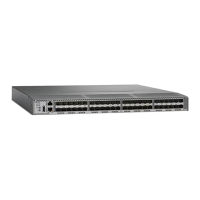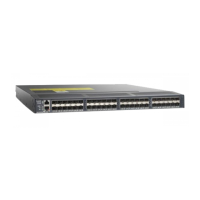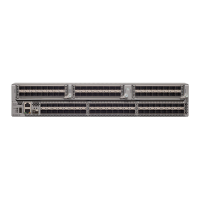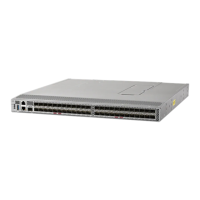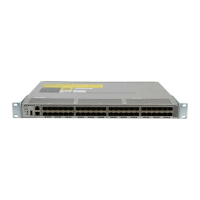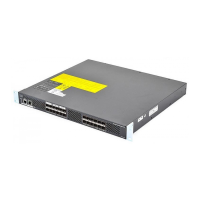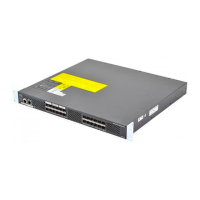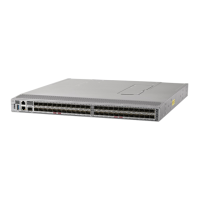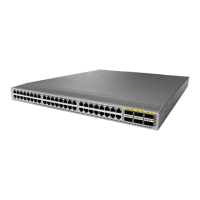Send documentation comments to mdsfeedback-doc@cisco.com
1-33
Cisco MDS 9000 Family Command Reference
OL-8413-07, Cisco MDS SAN-OS Release 3.x
Chapter 1 CLI Overview
Using the File System
If bootflash: is found corrupted during a boot sequence, you will see the following message:
ERROR:bootflash: has unrecoverable error; please do “format bootflash:”
Use the format bootflash: command to only format the bootflash: file system. You can issue the format
bootflash: command from either the
switch# or the switch(boot)# prompts.
If you issue the format bootflash: command, you must download the kickstart and system images again.
Formatting Slot0:
Be sure to format an external CompactFlash device before using it to save files or images.
You can verify if the external CompactFlash device is formatted by inserting it into slot0: and issuing
the dir slot0: command.
• If the external CompactFlash device is already formatted, you can see file system usage information
(along with any existing files).
• If the external CompactFlash device is unformatted (corrupted), you will see the following message:
Device unavailable
In this case, you need to format the CompactFlash device using the format slot0: command.
Note The slot0: file system cannot be accessed from the standby the loader> prompt or the switch(boot)#
prompt, if the disk is inserted after booting the switch.
Caution The Cisco MDS SAN-OS software only supports Cisco-certified CompactFlash devices that are
formatted using Cisco MDS switches. Using uncertified CompactFlash devices may result in
unpredictable consequences; formatting CompactFlash devices using other platforms may result in
errors.
Using the File System
The switch provides the following useful functions to help you manage software image files and
configuration files:
• Setting the Current Directory, page 1-34
• Displaying the Current Directory, page 1-34
• Listing the Files in a Directory, page 1-34
• Creating a New Directory, page 1-34
• Deleting an Existing Directory, page 1-35
• Moving Files, page 1-35
• Copying Files, page 1-35
• Deleting Files, page 1-36
• Displaying File Contents, page 1-36
• Saving Command Output to a File, page 1-36
